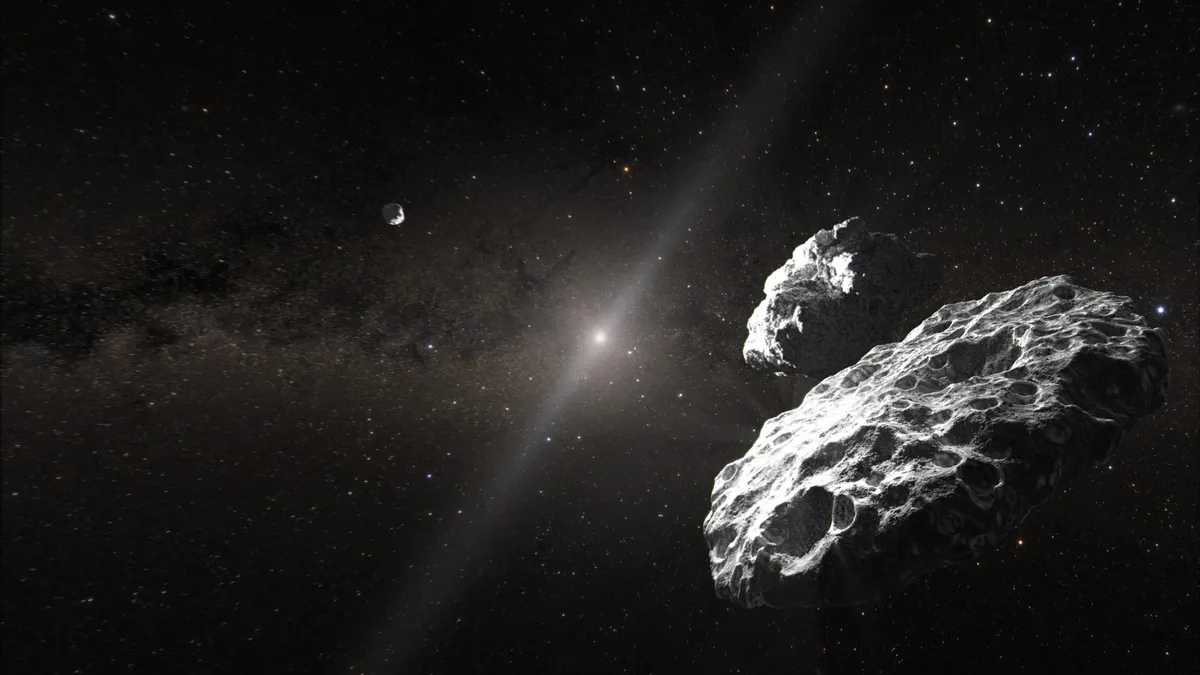
A newly identified trio in the Kuiper Belt may be only the second of its kind, providing compelling evidence that these distant celestial objects formed not through collisions but rather via gravitational collapse—similar to how stars are born. The universe contains numerous gravitationally bound three-body systems, including triple star formations and planets with dual moons, like Mars. Recent research indicates that the Kuiper Belt, which is the distant region of our solar system filled with icy bodies, could also harbor such fascinating systems.
Scientists have identified a second potential triple system within the Kuiper Belt, where what was initially believed to be a binary system may actually contain a concealed third object. This third body is positioned so closely to its companion that it can only be detected through its gravitational influence on the system's orbital dynamics. If this finding is confirmed, it would suggest that many more hidden triple systems might exist in the Kuiper Belt, supporting the streaming instability hypothesis. This theory posits that Kuiper Belt Objects (KBOs) did not arise from collisions but instead formed as triple systems through gravitational collapse.
The discovery of what appears to be a stable trio of icy space rocks in the Kuiper Belt was made possible using data from the Hubble Space Telescope and the W. M. Keck Observatory in Hawaii. Researchers are optimistic that the 148780 Altjira system could be the second known three-body system in this distant region, indicating that more such systems may be discovered. “The universe is filled with a range of three-body systems, including our closest stars, the Alpha Centauri system, and now we’re finding that the Kuiper Belt may be no exception,” stated Maia Nelsen, the study’s lead author and a graduate in physics and astronomy from Brigham Young University.
Discovered in 1992, Kuiper Belt Objects are ancient, icy remnants from the early solar system, situated beyond Neptune's orbit. While scientists have cataloged over 3,000 KBOs, they estimate there could be hundreds of thousands more, each measuring over 10 miles in diameter. The largest known KBO is the dwarf planet Pluto. The findings from Hubble provide crucial support for a KBO formation theory, which suggests that three small rocky bodies may not be the product of collisions in a dense Kuiper Belt but instead emerged as a trio from the gravitational collapse of matter surrounding the early Sun, about 4.5 billion years ago.
The Altjira system resides in the outer reaches of the solar system, approximately 3.7 billion miles away, or 44 times the distance from Earth to the Sun. Hubble images reveal two KBOs situated about 4,700 miles (7,600 kilometers) apart. However, researchers believe that repeated observations of these objects’ unique co-orbital motions indicate that the inner body is actually comprised of two bodies so close that they cannot be distinguished from such a vast distance. “With objects this small and far away, the separation between the two inner members of the system is a fraction of a pixel on Hubble’s camera,” explained Nelsen. This necessitates the use of non-imaging methods to confirm the presence of a triple system.
Currently, there are about 40 identified binary objects in the Kuiper Belt, and with two of these systems likely being triples, researchers believe they are observing not an anomaly but rather a growing population of three-body systems formed under similar conditions. However, accumulating this evidence requires extensive time and repeated observations. The only Kuiper Belt objects that have been explored in detail are Pluto and the smaller object Arrokoth, which NASA’s New Horizons mission visited in 2015 and 2019, respectively. New Horizons revealed that Arrokoth is a contact binary, where two objects have merged or come into contact, often resulting in a peanut shape. Ragozzine likens Altjira to a “cousin” of Arrokoth, estimating Altjira to be ten times larger at 124 miles (200 kilometers) wide.
While there is no current mission planned to fly by Altjira to obtain detailed observations akin to those of Arrokoth, Nelsen highlighted an upcoming opportunity for further study of this intriguing system. “Altjira is entering an eclipsing season, where the outer body will pass in front of the central body for the next ten years, providing scientists with a unique chance to learn more about it,” she noted. NASA’s James Webb Space Telescope is also set to join in the study of Altjira, aiming to determine if the components appear similar in its upcoming Cycle 3 observations.
The findings regarding the Altjira system have been published in The Planetary Science Journal, underlining the significance of this research in enhancing our understanding of the Kuiper Belt and its formation. The Hubble Space Telescope continues to revolutionize our grasp of the universe, having provided some of the most stunning and detailed images of deep space since its launch in 1990. With ongoing support from NASA and collaborative efforts with other observatories, Hubble remains one of the most vital tools in the quest to unravel the mysteries of our cosmos.